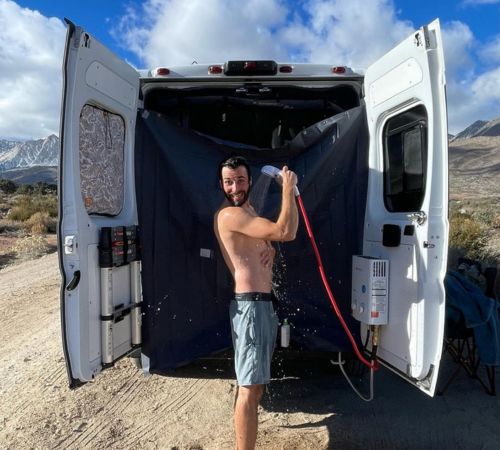What Is A Camping Hot Water System?
A camping hot water system is a convenient plumbing fixture that instantly supplies hot water. It operates by heating water as it flows through the heat exchanger using gas. This versatile unit is perfect for various activities such as off-grid living, camping, off-roading, dog shows, mobile catering, and equine events, where hot water is essential. The greatest benefit of this system is that it offers an uninterrupted supply of hot water without the requirement of a storage tank. Say goodbye to waiting for your hot water to start flowing again!
How does it work?
A camping hot water system operates by heating water while it moves through the heat exchanger. The heating element is versatile and can function in any places. As soon as you open the faucet, water passes through the heating element and gets heated instantly.
Are they worth it?
If you're fed up with waiting for your hot water to start flowing or if you're looking to maximize space in your house, investing in a camping gas water heater could be a great idea. The cost of these systems can vary from $200 to $700, depending on their size and features. Additionally, these water heaters are more efficient in terms of gas consumption compared to traditional units. However, before making a purchase, it's important to conduct thorough research and compare different models to find the perfect match for your requirements. Rest assured, installation is a breeze as most of these products are designed for easy setup.
5 top reasons to opt for an camping hot water systems
Here, we will explore five compelling reasons to choose a camping gas water heater.
➜ You're exhausted from waiting for your reheating the water in tank.
➜ You want a place-saving solution.
➜ You want endless hot water.
➜ You want to save energy.
➜ You want a flexible gear to fit in multiple places.
Which camping hot water system is the best?
The answer to this question varies based on your individual requirements and personal preferences. Several factors to take into account are the dimensions, strength, capability, and safety features of the unit. One notable advantage of these water heaters is their versatility, as they can be utilized in various scenarios.
How much does an camping hot water system cost?
Portable water heaters come in different sizes, power capacities, and with various features, which ultimately affect their prices. Typically, these units can be found in the price range of $200 to $700. It is important to compare models and take into account long-term costs, including energy efficiency and maintenance. The lifespan of the unit is determined by its maintenance.
Are camping water heaters more efficient than conventional hot water tanks?
Indeed, they surpass conventional hot water tanks in terms of efficiency. By heating water only when needed, these systems eliminate the energy wastage of repeatedly heating a whole tank. Instant water systems release at least 52% fewer CO2 greenhouse gases, making them a greener alternative to traditional hot water tanks.
What are the advantages and disadvantages of tankless hot water systems?
One of the key benefits of this system is its energy efficiency as it doesn't store hot water, eliminating the need to reheat already heated water. Additionally, it boasts a longer lifespan of up to 10 years when properly maintained. Furthermore, these systems are more space-saving compared to traditional hot water tanks. However, there are a couple of drawbacks to consider. Firstly, the initial cost of a tankless hot water system can be higher. Secondly, if you have high demand, there is a possibility of running out of hot water. Lastly, these systems require more maintenance compared to conventional tank water heaters.
Instant hot water system installation
Before proceeding with the installation of an instant hot water system, it is crucial to carefully review the manual or guidebook. These systems typically include components that can be easily installed and removed as needed. Once the setup is complete, connect the water source and the unit should be ready to use. It is worth noting that many individuals are able to assemble the entire system within approximately 20 minutes.









